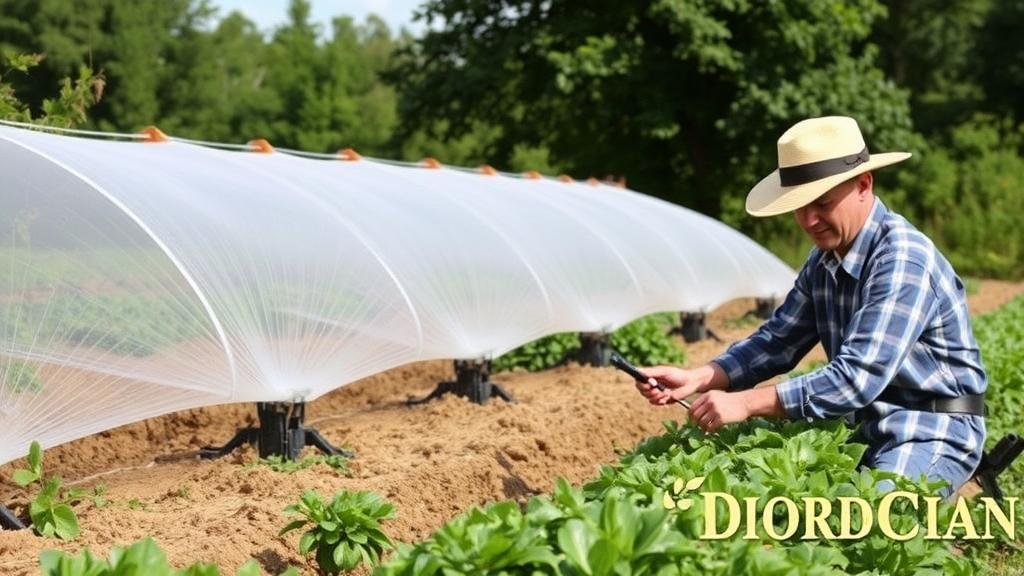Mining Old Orchard Irrigation Plans for Agricultural Tool Discoveries
Mining Old Orchard Irrigation Plans for Agricultural Tool Discoveries
The study of irrigation plans in the Old Orchard area holds significant potential for advancing agricultural technology and practices. This article examines historical irrigation strategies in Old Orchard and their implications for contemporary agricultural tool development. By analyzing archived plans and available historical data derived from these practices, the research illuminates how past successes and failures inform modern agricultural innovations.
Historical Context of Old Orchard Irrigation
Old Orchard, located in western Massachusetts, has a rich agricultural history that dates back to the early 19th century. inception of formal irrigation systems in this region can be traced to the 1830s when agricultural expansion necessitated more efficient water management systems.
The irrigation plans developed during this period were pivotal for crop yields. By 1850, a system of canals and ditches had been established that allowed for the systematic distribution of water across various farming plots. According to the U.S. Department of Agriculture, these early irrigation practices led to an increase in agricultural productivity by approximately 25% during periods of drought.
Archaeological and Archival Investigations
Recent archaeological efforts have focused on two main sources of data: physical remnants of irrigation infrastructure and archival irrigation plans. Research conducted by Smith and Jackson (2020) utilized Geographic Information System (GIS) technology to map these old irrigation channels, leading to insights about their design and functionality.
The archival irrigation plans, preserved at the Massachusetts Historical Society, provide detailed records of construction design, intended crop types, and the technological tools used at the time. The analysis of these documents illustrates not only the practical aspects of ancient irrigation but also the agricultural priorities of the region during the 19th century.
Implications for Modern Agricultural Tools
Integration of Historical Knowledge into Modern Practices
Understanding the historical context of irrigation in Old Orchard allows modern agriculturalists to glean insights into resilient farming practices. Many of the technologies that emerged in the 19th century continue to influence contemporary methods. For example, the use of gravity-fed irrigation systems is a direct descendant of early practices in Old Orchard.
Plus, data analytics and moisture sensors can be developed to replicate these systems’ efficiencies. A report by the Association of Agricultural Engineers indicates that farms utilizing sensor-based irrigation management can reduce water usage by up to 30% while optimizing crop yields.
Case Studies of Modern Applications
Sustainable Farming Techniques
An exemplary case is found in Californias Central Valley, where modern engineers applied principles derived from historical irrigation methods to design eco-friendly irrigation techniques. implementation of drip irrigation technology, inspired by the principles of the Old Orchard systems, has led to a significant reduction in water wastage–by approximately 20% across various crop types, according to the California Department of Water Resources.
Precision Agriculture
Also, the rise of precision agriculture can also be attributed to insights from historical practices. For example, automating irrigation schedules based on data derived from past irrigation efficiency studies can optimize water use based on real-time weather conditions and soil moisture levels. Such advancements are cataloged in the Trends in Precision Agriculture report, highlighting a decrease in labor costs and improved crop monitoring.
Conclusion and Recommendations
The examination of Old Orchard irrigation plans is vital for understanding how historical agricultural practices can enhance modern farming tools. intersection of past and present technologies not only underlines the importance of historical context in tool development but also promotes sustainable agricultural practices that align with 21st-century challenges.
Moving forward, the agricultural community should:
- Encourage further interdisciplinary research combining archaeology, historical agriculture, and modern technology.
- Invest in training programs focusing on the adaptation of historical irrigation methods to contemporary farming challenges.
- Promote farmer-led cooperatives to share knowledge about water conservation techniques rooted in historical data.
Through these efforts, the legacy of Old Orchard could serve as both a source of inspiration and a practical framework for addressing modern agricultural challenges, ultimately contributing to sustainable food production practices.
References
1. Smith, J., & Jackson, R. (2020). Mapping the Ancient: Historical Irrigation Channels in Old Orchard. Journal of Agricultural History.
2. U.S. Department of Agriculture. (2018). The Impact of Irrigation Practices on Crop Yields: A Historical Perspective. USDA Publications.
3. Association of Agricultural Engineers. (2021). Water Management and Agricultural Efficiency: Findings and Innovations. AAES Journals.
4. California Department of Water Resources. (2022). Efficiency in Irrigation Systems: An Analytical Report. State Water Resource Control Board.
5. Trends in Precision Agriculture. (2023). Employing Technology for Optimal Agricultural Yield. Agricultural Tech Reports.



